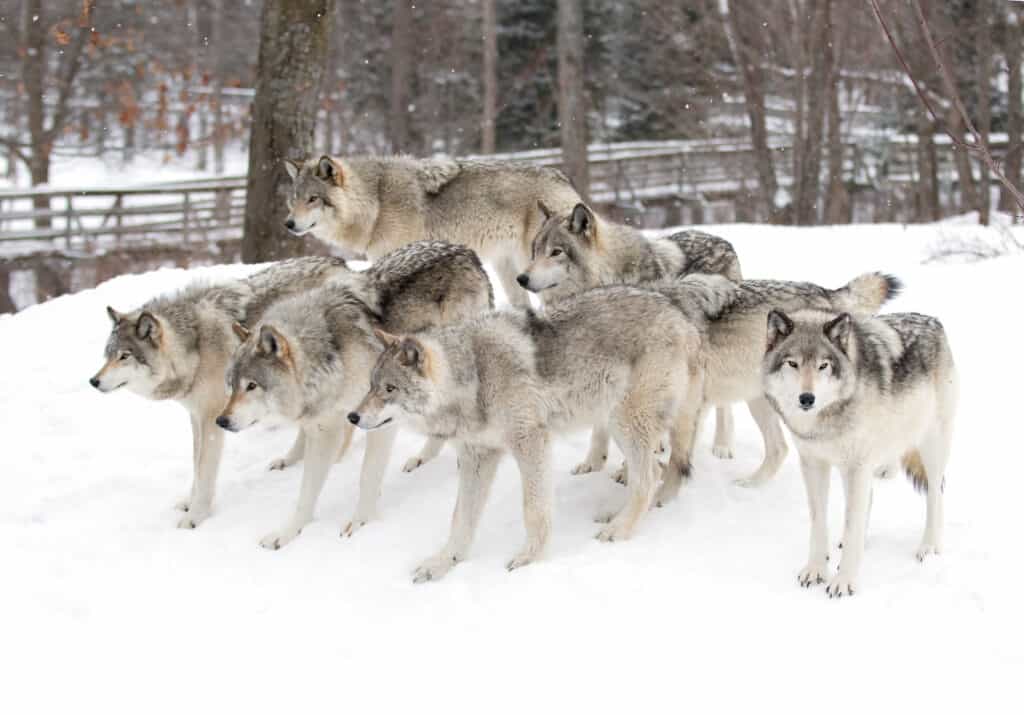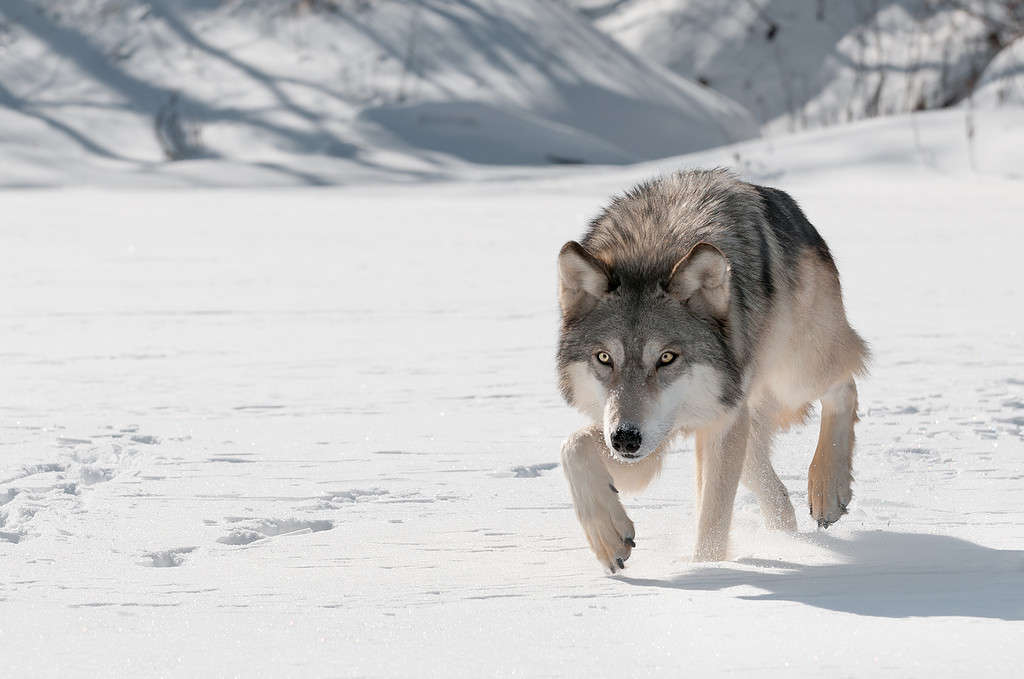Wolves were once one of the main predators across the vast majority of the United States, preying on a range of animals. However, they were eventually driven out of many areas through a combination of hunting and loss of habitat, resulting in them becoming almost extinct in the Lower 48. Wolves have slowly returned to several states, and they now inhabit thirteen states across the country. However, one state that they remain largely absent from is Illinois. So, keep reading to discover everything you need to know about wolves in Illinois, including when they last appeared in the state and whether they could once again inhabit it.
History of Wolves in Illinois

Wolves were once abundant across Illinois.
©Alan Jeffery/Shutterstock.com
Like much of the United States, Illinois was once a thriving area for grey wolves. However, they have since been extirpated from the state, with the final appearance of a wolf permanently residing in the state occurring in 1860.
Humans were the main reason for the elimination of wolves from Illinois. As settlers moved into the area several hundred years ago, they quickly began to encroach on the wolf’s habitat. In fact, habitat loss was one of the contributing factors to the demise of wolves in the state, with forests being cleared for homes and grasslands being taken over for agricultural purposes.
This new human presence quickly put wolves into close contact with humans, and so began years of conflict. Wolves were believed to be a threat to both humans and to livestock, and as a result, they were frequently hunted. The hunting of wolves continued over a period of several years, and the population just couldn’t cope. Eventually, there were simply none left in the state.
When Did Wolves Last Appear in Illinois?
Although wolves do not live permanently in Illinois, they have appeared intermittently in the state over the last two decades. This is because wolves inhabit several neighbouring states, and sometimes these wolves cross the border and enter Illinois. The first appearance of a wolf in Illinois in more than 100 years occurred in 2002. The incident involved a male wolf which was shot in Marshall County. The next confirmed records of wolves in the state involved two incidents in 2005 when male wolves were killed — one was shot and one was struck by a vehicle.
Since 2002, there have been a total of eleven confirmed records of wolves in the state. All of these were isolated incidents, and there is no evidence of a breeding population of wolves in Illinois.
Wolves remain an endangered species in Illinois, both at federal and state levels. Although wolves were removed from the federal endangered species list in January 2021, they were added back onto the list in February 2022. They have officially been a state endangered species since 2015.
How Wolves Impact the Ecosystem

Wolves are extremely important to the ecosystem because they keep populations of prey animals in check.
©Jim Cumming/Shutterstock.com
Wolves are considered to be a keystone species. This is because they are able to shape the area that they live in by managing the populations of the prey animals that live there. Wolves mainly prey on large animals, such as moose, deer, and elk. Without wolves to manage the populations of these animals, their populations can become too large, which can seriously threaten the habitat that they live in. This is because they can over-graze areas, which can damage the vegetation and prevent it from thriving. This even has a knock-on effect on the other animals that live there, such as birds and insects.
Also, as populations of the large ungulates that the wolves prey on increase, there is a risk of them starving because they have over-grazed their habitat. Additionally, wolves often prey on sick or weak animals, meaning that only a healthy population remains. When the populations are kept in check, the vegetation is able to regenerate and regrow, leading to a flourishing habitat again.
Could Wolves Return to Illinois?

Wolves are unlikely to return to Illinois permanently.
©Holly Kuchera/iStock via Getty Images
Although a small number of wolves have been spotted in Illinois over the last twenty years, it is not expected that wolves will return to live in the state any time soon. There are two significant reasons for this.
The first reason is that Illinois is a highly populous state. Wolves typically prefer to stay away from people and live in areas where they are less likely to be disturbed by humans. This makes Illinois largely unsuitable for them. The other reason is that Illinois lacks suitable habitat for wolves. As well as being highly populous, farming and agriculture are extensive in Illinois, and the large swathes of farmland are an unsuitable habitat for wolves. Although wolves are extremely adaptable animals, they do tend to prefer thick forested regions where there is plenty of cover for them and an abundance of prey.
There are no formal plans to reintroduce wolves to Illinois, but a natural movement from other states is possible. However, despite wolves inhabiting neighbouring states, no significant numbers of them have crossed the border, and no packs have established in Illinois. That’s not to say that they couldn’t become established in the state, as there are small areas where they could potentially thrive, but so far it remains highly unlikely.
The photo featured at the top of this post is © slowmotiongli/Shutterstock.com
Thank you for reading! Have some feedback for us? Contact the AZ Animals editorial team.






